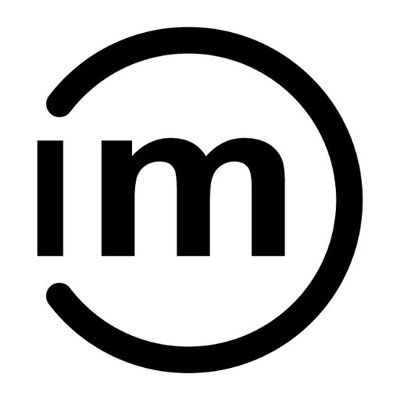What Happened to Google’s Effort to Scan Millions
In 2002, Google embarked on the most ambitious project in the history of educational technology. Google aimed to scan and digitalize bulk of the world’s books.
In 2008, Google books went into partnership with HathiTrust Digital Library. It is an online database which provides large-scale access to scholarly books without infringing copyrights. It contains more than 15.7 million books in its database, mostly from Google’s scanning. Scholars can also tap into the database and conduct a computational analysis without breaching copyrights.
The public access to this behemoth database was hampered by the case action lawsuit by Authors Guild in 2011. However, in 2012 the court ruled against Authors Guild, but the dream of easy and total access was not quite achieved.
References:
Howard, J. (2017, August 15). What Happened to Google’s Effort to Scan Millions of University Library Books? – EdSurge News. Retrieved September 26, 2017, from https://www.edsurge.com/news/2017-08-10-what-happened-to-google-s-effort-to-scan-millions-of-university-library-books
Developing the 21st-century social studies skills through technology integration
Summarized by Mary McCann
According to Farsi (2016), technology integration is essential to the future of social studies. This article outlines the history of technology in the social studies classroom – how it has evolved and changed as the decades have passed, and how it is needed more than ever today. Drawing on his own experiences, Farsi predicts what effect technology is likely to have on social studies, and why (and how) educators can take advantage of it. Also included in the article are guidelines and ideas to help educators integrate technology into the classroom.
References:
Farisi, M. I. (2016). Developing the 21st-century social studies skills through technology integration. Turkish Online Journal Of Distance Education, 17(1), 16-30. Retrieved from http://files.eric.ed.gov/fulltext/EJ1092803.pdf
Education through peer teaching
Summarized by Shahrukh Khan
Tech Buddies is a contemporary teaching strategy which can enhance pedagogy across the school districts. The method of pairing higher grade students with lower grade students is a perfect example of utilizing existing resources to elevate learning among peers. Tech buddies not only assist in creating a healthy learning environment but also increases teamwork. The constructivist teaching strategy takes control of the classroom from the teacher and transfers it to students. The collaborative learning triggers maximum learning in a short span of time. Tech buddies are getting famous around various school districts and its evident that schools who adopted this strategy have improved their instructional design and test scores.
Advantages and Disadvantages of E-Learning Technologies for Students
Summarized by Sangyoon Park
The author discusses the effectiveness of e-learning while comparing classical education with e-learning. E-learning does not require classroom space and can continuously be used as a recording of teachers lecture without time constraints. It is possible to establish a school that goes beyond space. You can easily connect to the world and experience cultural diversity.
Depending on the computer specifications, the range accessible by the user is different. Also, some students prefer face-to-face rather than digital space. The professor’s feedback may be more appropriate in the real-life classroom than in a digital environment.
The author argues that the combination of traditional education and e-learning is necessary to develop both types equally.
References:
Hetsevich, I. (2017, July 31). Advantages and Disadvantages of E-Learning Technologies for Students. Joomlalms. Retrieved September 25, 2017, from https://www.joomlalms.com/blog/guest-posts/elearning-advantages-disadvantages.html
Revolutionizing education
Summarized by Mary McCann
Taking Advantage of the Power of Play
Summarized by Shahrukh Khan
Gamification is a future of instructional design in pedagogy. It is believed that students learning abilities enhance in interactive and critical thinking classroom settings. Such environment can be facilitated through induction of game jams in the classroom. Game jams are interactive objective based set of instructions which makes learning a much more interesting idea.
In the world of educational technology, there are many interactive games designed on various topics which can be used readily in classrooms. The idea of game jams is to replace the traditional textbooks and whiteboards into tabletop interactive games, e.g., US Mission to give an overview of US history to students. Moreover, tablets can be used to play games like a scratch to organize the acquired knowledge in the form of a puzzle.
References:
Farber, E. M. (2017, September 18). Taking Advantage of the Power of Play. Edutopia. Retrieved September 18, 2017, from https://www.edutopia.org/article/taking-advantage-power-play
Emerging technologies in learning environment
Summarized by Sangyoon Park
-Virtual Reality
Virtual reality is a computer technology that uses a headset to create a three-dimensional simulation for its users. It became the most innovative and most anticipated technology of 21st century. It has potential to change how humans use to learn skills entirely. VR is now used to create medical training simulation, architectural walkthroughs, historical re-enactments so on and so forth.
-Augmented Reality
Augmented reality, unlike virtual reality, integrates digital information with the user’s actual environment. It is a fact that we have not enough time to adjust Augmented Reality in school. However, we can build a more efficient educational environment than video and books through augmented reality.
Osmo is the perfect example of Augmented Reality in a learning setting. The following video gives a quick tour of Osmo:
-360 videos
360 video is also called “immersive” video. It is a video recorded by simultaneous recording from all directions at the same time using an omnidirectional camera. As a viewer, we can control the direction of the video. Check out a SCSU library orientation video for our students shot in a 360 omnidirectional camera below:
References:
Sharon B. (July 18, 2017). Emerging Learning Technologies: Promise vs. Hype. Bottom-line performance. Retrieved from http://www.bottomlineperformance.com/emerging-learning-technologies-promise-vs-hype/
Perlego brings all your textbooks in one space
Summarized by Saad Khan
Digital literacy has changed the way students thought about books expenses and accessibility. One example that stands out is Perlego. Perlego follows Netflix model for textbooks. Traditionally, a student has to buy a book online for lump sum amount. With Perlego, they have to pay a monthly subscription and get access to thousands of academic books online.
Major academic textbook publishers such as Palgrave, Wiley, and Pearson are on board with Perflego. So students get access to a wide online library of scholarly books. The educational leaders of today are finding new ways to make the students more involved in their studies inside and outside of the classrooms. Increasingly, online services like Perlego are encouraging the textbook publishers and the readers to find common ground by bridging the gap through technology.
Thoughts and comments are welcome.
References:
Nazerian, T. (2017, September 11). Will a Netflix Model Work for Textbooks? EdSurge News. Retrieved September 14, 2017, from https://www.edsurge.com/news/2017-09-08-will-a-netflix-model-work-for-textbooks
21st Century Library by Merton Thompson
If you stop to consider, it is a daunting task to describe what a library, or any resource, will be like over a 100- year span of time. An activity I have done in my undergraduate classes the past several years is to have the students, who are enrolled in teacher preparation programs, to consider for what year they are preparing their students. Like many things in my life this activity is based upon an idea that my wife, Marcia, developed which in turn was based upon a concept put forth by Heidi Hayes Jacobs in her book Curriculum 21: Essential Education for a Changing World.
In the activity, I start by asking my teacher candidates the year they expect to graduate. For my current students, the answer is typically 2018. Then I ask the teacher candidates when they expect to be hired for their first teaching position. Again, the typical response is 2018. Next, I have to make some assumptions. Since I often have taught students seeking licenses in either secondary (5-12) content areas, like math, language arts, sciences, or K-12 content areas like art, physical education, special education, I tell them that for the sake of this activity, their first teaching position is at the seventh grade level. Based upon this assumption, we continue with determining when those seventh grade students were born. A likely response is 2005. Next, we determine when these students will graduate from high school: 2023. We continue on to college graduation, and assuming four years for a degree, the response is 2027. Finally, I ask my students how long these students are likely to live. Again, we have to assume some things, but a conservative number, according to the Social Security Administration, is 87 years. This means that the seventh graders in my teacher candidates’ first year of teaching will likely live until the year 2092. I often get some stunned silence at this point. But, because I can’t leave it there, I remind them that we are talking about students they will be teaching in their very first year as a teacher. With any luck my candidates will have a teaching career of at least 35 years or more. I try to point out that their job as a teacher is to prepare their students to be successful people throughout their life and they have to accomplish this task with the knowledge and resources available to them in 2017 and 2018. So, when we are talking about the 21st Century library and the 21st Century world, we need to keep in mind that we are not far from making decisions that will impact people who will live into the 22nd Century.
On a more personal note, this is my last column as Chair of the Information Media Department. My wife, Marcia and I, along with Jeanne Anderson, are retiring at the end of this semester. This is my 28th year, Jeanne’s 26th, and Marcia’s 11th as full time faculty members. Just as I am not sure what the 21st Century library should look like and have for resources, I am unsure what the future of the Information Media Department is. Because of university budgetary issues, our three retirements are being replaced by a single faculty member. Our programs, particularly those leading to licensure as a library media specialist are strong and will continue, but the configuration of the department is likely to change. Stay tuned.
I would like to say a very heart felt “thank you” to all of the students and colleagues that have taught me so much over the past 28 years. It has been a wonderful experience. I now challenge you to determine what the 21st and 22nd Century library and world will be like. It is up to you to prepare your students, trainees, co-workers, family, friends, and others for that life. It is our responsibility as a human population to seek and gather information, from that information determine which are facts, decide which of those facts are most relevant to a given situation, and finally make decisions based upon those relevant facts. Good luck to us all







